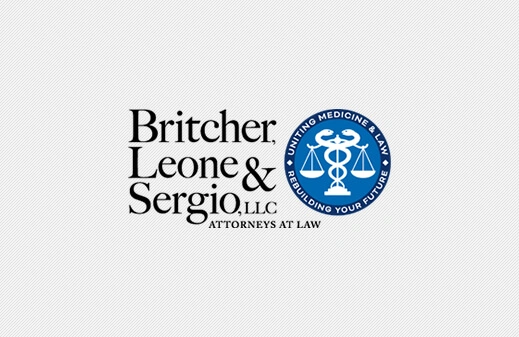
CANCER, LUNG CANCER | December 23, 2025
The U.S. has been experiencing a shortage of primary care physicians (family medicine, pediatricians, geriatricians) as medical school graduates go after specialties that pay more.
Summer means vacations, summer camp, gardening and DIY projects outdoors, time on the trails or at the beach, or simply soaking up the warm sun in one’s backyard. While we may all enjoy those respites from our busy lives and long for a “healthy tan,” exposure to the sun’s UV rays can cause damage that everyone should be aware of—and take proper precautions to avoid skin cancer and melanoma, its most aggressive form.
The risks of melanoma
A diagnosis of melanoma must be taken seriously. Melanoma is the third most common skin cancer and the fifth most common of all cancers. It affects both males and females of all ages and is prevalent among teens and young adults ages 15-29. When it spreads, it generally does so below the skin’s surface to subcutaneous tissues and while many people may not realize it, can also spread to major organs (lungs, liver, brain) and bones. Therefore, it can be lethal.
Prevention and early detection are critical
Sunscreen of SPF 30 and higher protects the skin by blocking harmful ultraviolet (UV) radiation and can reduce the risk of developing melanoma and squamous cell carcinoma. It works by creating a barrier that absorbs, reflects, or scatters UV rays so they don’t penetrate and damage skin cells.
Be generous with sunscreen and if you’ve been swimming or sweating a lot, apply it every two hours or so to ensure you are adequately protected. But don’t expect sunscreen to do the full job of safeguarding your skin; seek shade and wear protective clothing (hat, long sleeves, and specialized UPF-rated clothing that blocks the sun’s rays) for greater protection.
Sun worshippers and people who work outdoors in the sun are at greater risk of skin cancer; however, diligent sunscreen wearers should also know the warning signs of melanoma. Check your skin for spots or growths that are asymmetrical, have irregular borders, are not uniform in color, undergo changes in size, shape or color, and have a diameter of over 6 millimeters. Have your physician check for unusual growths with these characteristics during your annual checkup and take immediate steps to biopsy the growth and treat it as needed.
Early detection of skin cancer is vital to having good treatment outcomes. Once the cancer has metastasized, treatment becomes more complicated, and survival rates decrease significantly. Consider this: individuals with early-stage localized melanoma have a five-year survival rate of around 99%; once the cancer has metastasized, that survival rate drops to approximately 30%, a stark difference.
Start protection early with your children
According to the Skin Cancer Foundation, a bad sunburn in childhood or adolescence doubles the risk of melanoma later in life. So, slather that sunscreen on your kids, make sure your teenagers understand the importance of using it, and keep babies out of the direct sun as much as possible. NOTE: Avoid using sunscreen on infants under six months old as their skin cannot metabolize and excrete the chemicals in it (older babies can tolerate sunscreen). Rather, use sunhats and lightweight sun-resistant clothing and baby-sized sunglasses with UVA/UVB protection. These measures apply to children of all ages.
About those sunglasses: be aware that beyond the risk of skin malignancies, UV rays can also harm eyesight over time (increasing the risk of cataracts when we get older). Therefore, sunglasses that provide at least 99% UV protection are a smart accessory for everyone.
My history with skin malignancies
I am sharing this cautionary information from personal experience. I am fair skinned and started playing soccer and golf when I was 8 years old. My parents never expressed a need for sunscreen. As an adult (I played soccer until I was 58 and still play golf) I knew about the need but found it hard to use on my face because it would get into my eyes and sting. I’ve paid a price for that behavior. Roughly 25 years ago I had my first basal cell on my nose and with it my first MOHS surgery. Now, I see the dermatologist every six months for my “Snip, Clip and Freeze” treatments; during those visits, I usually have something biopsied, and one or more spots get zapped with liquid nitrogen to stop their growth. I use a stick applicator on my face and the more traditional cream elsewhere before I am in the sun. I have had six or seven basal cells and two squamous cells removed. Those include one under my eye that required eyelid reconstruction, so I know skin cancer is serious business. I’ve been prescribed and have used a cream with two chemical agents that turns my face quite red and stings but clears my skin of the pre-cancerous actinic keratosis that leads to the development of skin cancers. Not fun but very effective.
In total, I’ve had 8 Mohs procedures over the past 25 years. This is surgery that cuts away thin layers of skin to remove skin cancer, while preserving the healthy skin around the cancerous lesion. This includes one on my nose that created a zigzag-shaped wound before it healed. Luckily for me, I heal well, and no one can tell that I’ve even had all but one of them and that one, only if you look really close.
Be careful out there—and have fun this summer!
Given my history with skin cancer, I wish I’d done more, earlier in life, to avoid all the checkups and medical procedures. I can’t stress enough the importance of taking proactive measures to protect yourself and your loved ones against the hazards of sun exposure. Doing so will help everyone enjoy fun in the sun and stay safe.
Author: E. Drew Britche
Related Posts